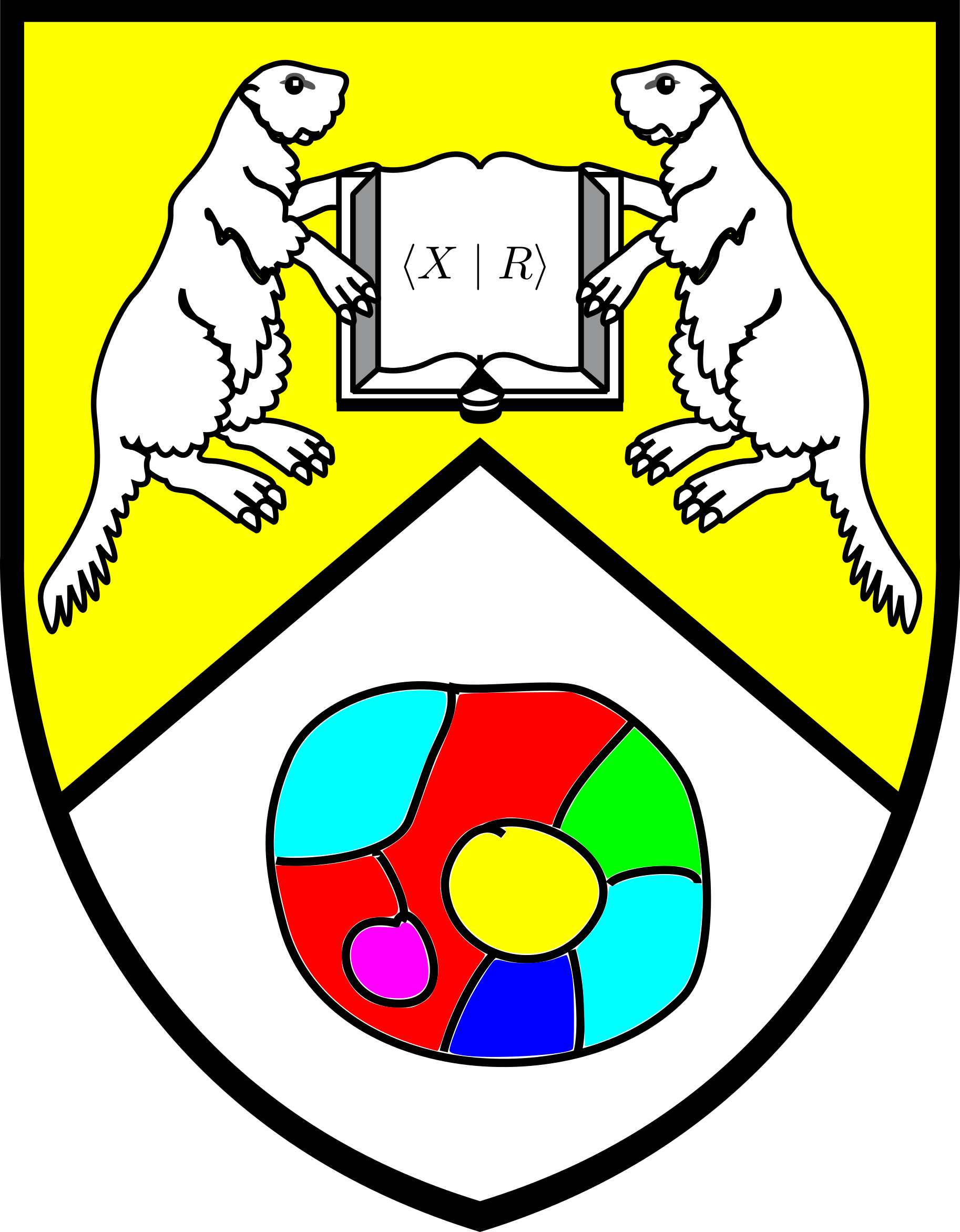Section 1.1 Generalized associativity
As the reader should already know, a group \((G,\cdot)\) is a pair consisting of a set \(G\) and a binary operation \(\star:G\times G \to G\text{,}\) usually called multiplication, which satisfies the following axioms:
- The multiplication operation is associative, i.e. for all \(g,h,k \in G\) we have\begin{equation*} (g\star h)\star k = g\star(h \star k). \end{equation*}
- There exists an element \(1_G\in G\) called the identity element such that for every \(g\in , 1_G \star g = g\text{.}\)
- For every \(g \in G\) there exists an inverse \(g^{-1} \in G\) such that \(g\star g^{-1}=1_G.\)
We will always denote a group by simply \(G\text{,}\) we will almost always omit the subscript for the identity element, and we will usually denote multiplication simply by concatenation, i.e. we'll write stuff like
Throughout this course we will want to consider a generating set \(A \subset G\) of a group. The cleanest definition of a generating set is to say that if \(H \leq G\) is a subgroup (i.e. it is closed under multiplication and inverses) and \(A\subset H\) then \(H=G.\)
The way we want to think of a generating set is as follows: \(A\) is a generating set of \(G\) if every \(g \in G\) can be expressed as a product
where \(a_i\in A; i=1,\ldots,n\) and \(\epsilon_i = \pm 1\text{.}\) The issue is that multiplication is a binary operation which means such a product must have a bunch of brackets e.g.
The number of bracketings grows exponentially interms of the number of factors. This is terrible!
The associativity axiom amounts to saying that three factor long products are well-defined, i.e.
Our goal is now to show that long products with arbitrarily many factors are well-defined. On the one hand, this lets us ignore those pesky brackets, on the other hand this implies that a product of long factors is well-defined, i.e. the concatenation
is well-defined.
A few words about what we mean by well-defined are in order. Consider the binary operation \(\div\) of division. This operation is not associative so brackeding matters. For example
so the bracket-free "long product" \(12\div 12\div 12 \) is not well defined. If the reader thinks division is fishy, then they can investigate the cross product from linear algebra which is an actual non-associative product.
For now we will keep our brackets. A product is left-nice if it consists of a single factor, if it consists of two factors \(x*y\text{,}\) or if it is of the form \(x*(z)\) where \(z\) contains at least two factors and itelf left-nice.
We leave as an exercise the following:Theorem 1.1.1. Generalized associativity.
Any messy product can be turned into a nice product by a sequence of applications of the associativity axiom. Furthermore the order the factors is preserved.Corollary 1.1.2.
In any group (or any algebraic structure with an associative binary operation) long productsExercises 1.1.1 Exercises
1.
Prove Theorem 1.1.1.
2.
Let \(A\) be a subset of a group \(G\text{,}\) prove that the set of products
is a subgroup.
Hint: For inverses try writing a product backwards and flipping signs.
